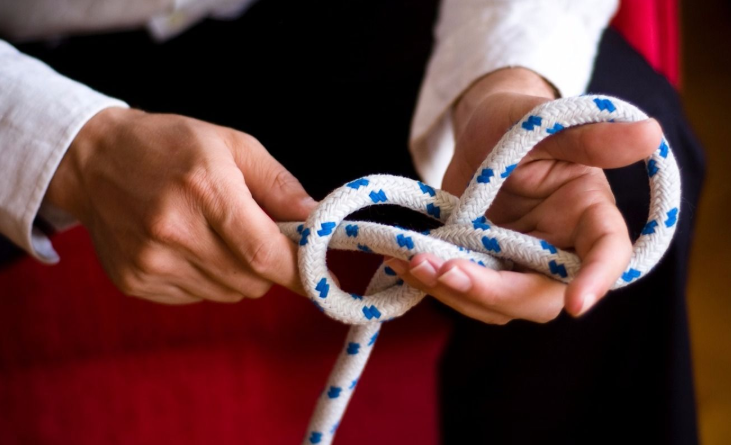How to Tie the Five Basic Knots Everyone Should Know

There are lots of simple knots that are used in everyday life, from tying our shoelaces to fastening a string to putting up a poster outside – even applying a bandage. Knot tying is a skill used by everyone in the world, but especially by climbers, anglers, sailors and scouts. For those who work in the most extreme environments, knowing how to tie the correct knot could literally save lives. For most people, however, only a handful of knots (if any) are known, but it is definitely a skill that everyone should have. Square knots, for example, are ideal for applying bandages and slings, whilst a parcel-tying knot is essential for shopkeepers who need to tie parcels with string.
With so many different knots out there, which are the most important ones should we know how to do? Geoffrey Budworth explains which five basic knots everyone should know . . .
1) The Reef Knot
This is flat and symmetrical, with two interlocked bights with both short ends on the side. It needs to be flat – if it isn’t flat, then it’s a granny knot. Tie it by placing one overhand knot on top of another. Tie left over right, then right over left. These can be quickly freed by pulling sharply on one end.
2) The Bowline Knot
Form a loop in the standing part of the line, then pass the working end up through the eye of the loop, around the back of the standing part, and then back down through the eye once more. This is a simple, strong and secure knot and can be untied by pushing forward the bight, which encircles the standing part of the line. It is mostly used in climbing, life saving and boating.
3) The Sheet Bend Knot
Form a bight in one line and pass the working end of the other, thinner line up through the eye formed, around the back and trap it in place under its own standing part. It can be untied by rolling forward the bight encircling the single line. This knot is used to secure ropes to sails.
Tie it by positioning the two lines alongside one another facing opposite directions. Tie an overhand knot with one end. Reverse the lines and make an identical overhand knot with the other end, enclosing its nearby standing part. Pull the two knots together. Climbers and anglers use this knot often.
5) Clove Hitch Knot
Used to fasten a line to a rail, post or bollard or to hang things in your garage. Pass the working end around the hitching rail, cross the standing part at the front, take another trip around in the same direction and trap the end beneath the diagonal. Slip it off the end of the spar around which it was tied and it just falls apart.
For over 100 more knots, read The Knot Book (Robinson) by Geoffrey Budworth.


